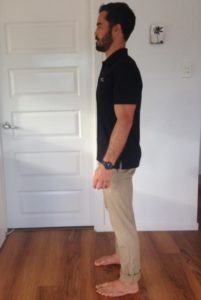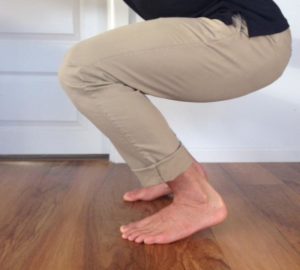Joe takes us through the basic squat – how can so many people get it wrong!
“my doctor told me I have arthritis and there’s nothing that can be done about it”
So many patients over the years have said this exact statement to me, nothing could be further from the truth!
The emotional impact of your arthritis is huge and includes
We are on a rant and have created a FREE VIDEO which explains
Following knee surgery, your surgeon will likely suggest you see a physiotherapist for post surgical rehabilitation. This rehabilitation is an important part of optimizing your recovery and ensuring that you return to full function. Your physiotherapist will discuss the post surgical rehabilitation process with you depending on the type of surgery that you have had.
After knee surgery, the best exercise to help regain range of motion and strength is the stationary bike. You will typically need enough bend in your knee before starting this exercise. You may also need to adjust the seat height to a slightly higher position than usual to make it more comfortable for your first couple of attempts.
Once comfortable with your position on the bike, begin 10-15 minutes of little to no resistance pedaling, aiming to keep a regular speed and rhythm throughout.
If you experience no significant aggravation in pain or swelling in your knee following your time on the stationary bike, then you can gradually increase duration and resistance over the coming weeks.
Jess is our post-operative rehab physio and is getting amazing results with lower and upper limb conditions – ring us on 55787155 or email admin@physiologic.com.au to book any post operative surgery rehab with Jess
If my back is hurt I will have permanent back pain: although initially your pain may be high, the back is a strong structure, designed to move, and permanent damage is rare.
If I have back pain I should stay in bed and rest: although avoiding aggravating activities is wise initially, prolonged bed rest may actually make your back pain worse. Keeping active and gradually increasing your activity as your pain settles is the best approach.
The more back pain I have, the more my spine is damaged: Pain and damage are poorly related. A paper cut is a great example of this! Pain levels differ between individuals for a variety of reasons – two people with the same injury can feel vastly different amounts of pain.
My pain is due to something being ‘out of place‘: Despite the widely adopted language, discs and bones do not randomly ‘pop in and out’. Research shows that the most disabled people with low back pain are those that hold the belief that there is a problem with the structure of their spine.
I need an x-ray or scan for my back pain: Not necessarily. A large proportion of back pain is ‘non-specific’, or in other words, won’t really show anything with X-rays or even CT/MRI scans. Most adults will have spine changes upon imaging. These tests should be reserved for those where more serious problems are present.
You should always seek help with a sore back – with correct education and advice your risk of long term problems will be minimal. We understand back pain and have been treating it for years with great patient outcomes.
Give reception a ring on 55787155 or email admin@physiologic.com.au to book your appt now
Winter is here and with those aches and pains getting worse over the colder months it’s the perfect time to focus on arthritis.
Are you fed up with being told that you have arthritis and cant do anything about it ?
So are we!
So many patients who have this problem are badly advised and dont get the help they need. Often this advice may come from friends, doctors or others
We would like to invite you all to our FREE Arthritis seminar night at Physiologic. We will talk about all types of arthritis including osteoarthritis and rheumatoid arthritis
On the night
Venue: Physiologic
Date: Wed 22nd June
Time: 7pm
Everyone is welcome however spaces are limited – ring 55787155 or email admin@physiologic.com.au to book your place.
Squatting is essentially just lowering your center of gravity and there are hundreds of different ways to do this. The most appropriate variation will depend on the individual context. The squat I would like to discuss is a variation I believe is a safe, efficient and effective way to squat in a gym environment where the purpose is to lift heavy, repetitively or quickly in order to develop strength, endurance or power.
I like to have the feet about shoulder width apart with the toes pointing straight ahead this decreases the likelihood of the feet and knees caving in which is common error in beginners. From this position simply reach your hips diagonally back and down as if towards the bottom corner of the room behind you. If you are not using weight it can be useful to reach your arms forward as a counter balance (figures 1 and 2).
Figure 1 Figure 2


A common misconception is that your weight should be on the heels when you squat. This belief often causes people to squat in an unbalanced and inefficient manner (figure 3).
On the other hand squatting so far forward that your heels lift completely off the ground puts unnecessarily large forces on the knees. Instead aim to be balanced between these two extremes with even pressure on the ground beneath the balls of the feet and the heels. A good way to find this position is to stop towards the bottom of your squat and shift your weight forward until your heels lift off the ground (figure 4) and then back until the toes lift (figure 5) and then shift your weight forward so that the toes are relaxed but so that the heels are still firmly grounded (figure 2).
Figure 3 Figure 4 Figure 5



The appropriate squat depth depends on your flexibility and coordination. If you attempt to go two low one of two things is likely to happen. Either you will lose the inwards curvature of your back (figure 6), which arguably in the context of a loaded squat isn’t ideal, or your ankles and knee will stop bending or even straighten as you continue to flex forward from your hip.
As a guide the angle of your torso should be close to parallel with that of your shins (note that this is different than a deadlift, which will require more torso and less lower leg angle). Simply lower as far as you can without the above or other technique flaws occurring and then return to the starting position. Make sure you fully return to a relaxed standing position (Figure 1).
Figure 6

In summary: place your feet shoulder width and pointing straight, reach your hips back and down while maintaining your weight over the center of your feet and then return to standing. We will discuss ways to load, progress, regress and add variation to this basic squat in future articles.